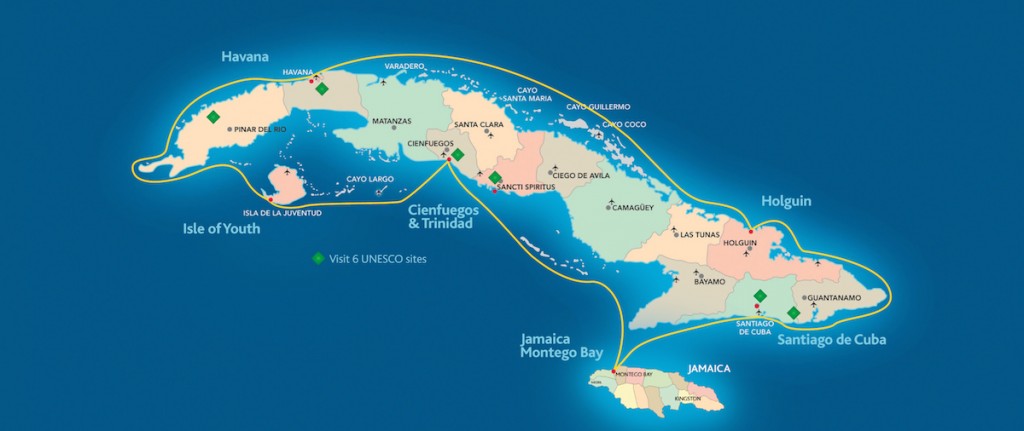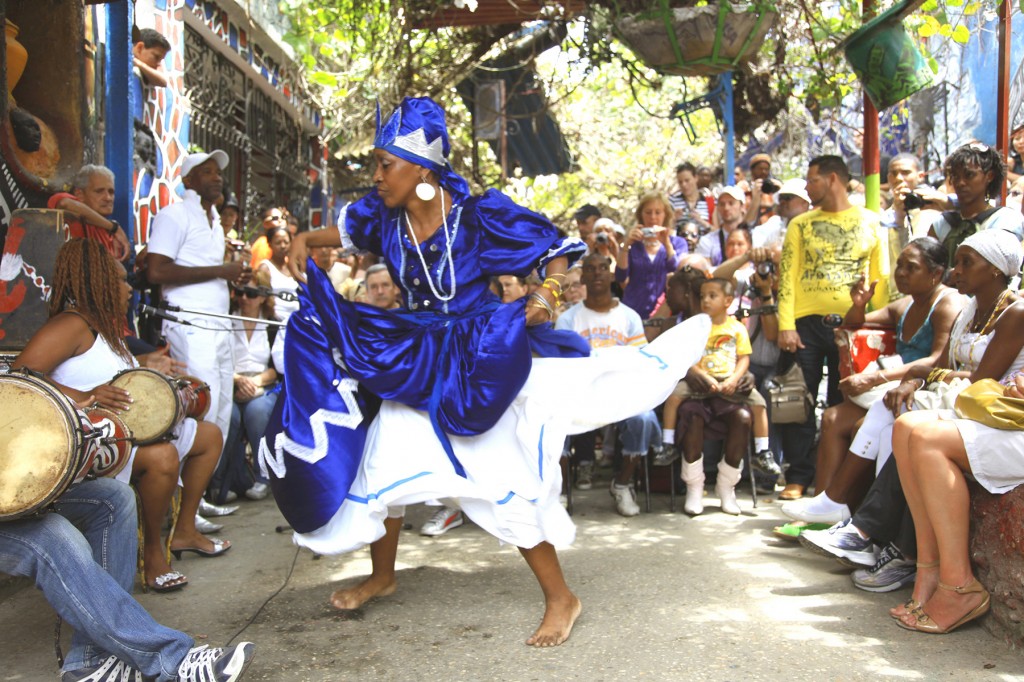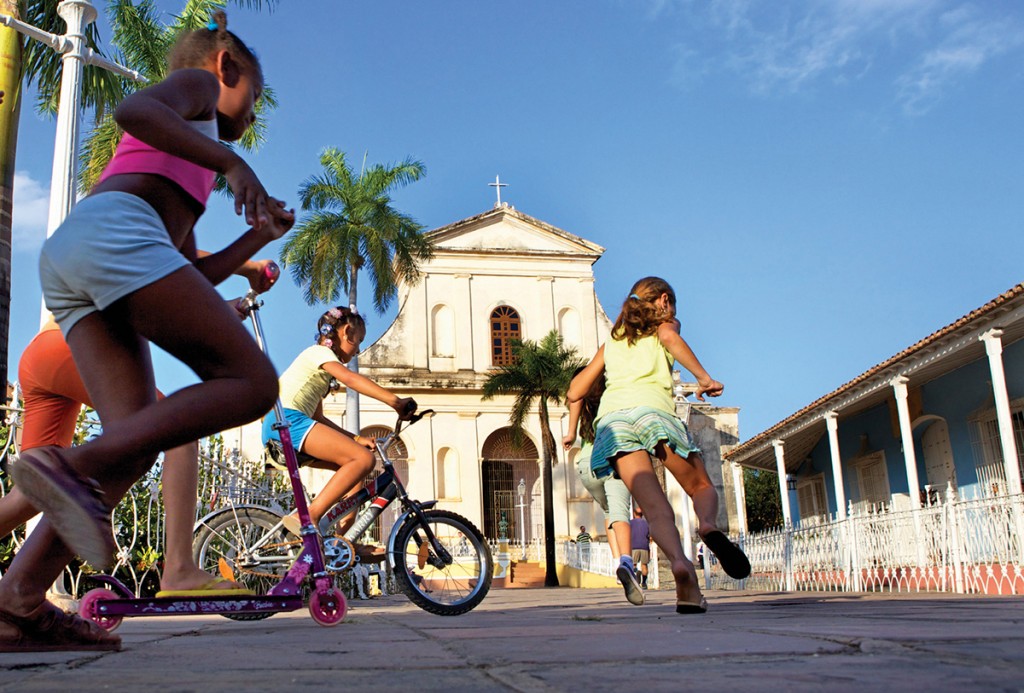
Day 1: Montego Bay, Jamaica
Montego Bay is one of the two exciting embarkation ports. With unique culture, amazing beaches, picturesque mountains, and incredible duty free shopping, this place cannot be overlooked.
Go horseback riding on the beach, take in a round of golf, explore a plantation, or meander around the shops and enjoy. Whether you start your cruise here or spend the day, Montego Bay is extraordinary.
Day 2: Cienfuegos & Trinidad
Enjoy the beautiful City of Cienfuegos, capital to Cuba’s smallest province and bastion of hospitality, strolling along its seaside promenade and viewing the Castillo de Jagua: an impressive fortress erected in 1745 for protection against pirates.
Visit the colonial city of Trinidad, a UNESCO world cultural heritage site nestled in one of the island’s most picturesque areas. Bask in the warmth of the people and the charming cobblestone street
Day 3: Punta Frances on the Isle of Youth
Pine forests scent the “Isle of Youth”, mingling with orange blossoms and warm ocean breezes. Anchorage is just off the island followed by a transfer to the coast at Port Frances. This is a glorious beach of pure white sand surrounded by crystal clear warm waters – perfect for snorkeling. Enjoy a beach barbecue in the sunshine and listen to live music provided exclusively for you.

Day 4: Havana
Cuba’s capital is home to 2 million people and in addition to its brilliant seaside setting, hums with enough history, music, art and architecture to rank it among the world’s most intriguing cities. Modern Havana is a unique combination of colonial influences, 1950s design and elements (like all those emblematic antique cars) and energetic entrepreneurial spirit, totally new and evolving daily.
When everyone is boarded and check-in to the cabins complete, a welcome briefing and cocktail party is held on the outer deck. While savoring a Mojito or Cuba Libre, you will meet the team of guides, lecturers, and shipboard staff, who provide you an overview of the week ahead and explain how things work onboard the ship.
The welcome dinner consists of a variety of traditional Cuban food. Cuban cuisine is a fusion of Spanish, African and Caribbean influences, and the result is a unique and flavorful blend of those cultures. Much attention has been paid to deliver an incredible gastronomic experience on board during the trip; this evening will be no exception. Dine with fellow guests before retiring to the upper deck to wave good-bye, as Cuba Cruise set sail from the port of Havana. When setting out from the harbor, the ship passes the magnificent colonial-era forts that once guarded the entrance of the city and protected her against pirates. Together, this complex is entitled the Fortaleza de San Carlos de la Cabaña and the Castillo de los Tres Reyes del Morro (a national monument); locals know it as simply the Morro-Cabaña, but no matter what you call it, the view from the ship is spectacular.
Day 5: At Sea

Day 6: Holguin
Christopher Columbus landed in this region in 1492 and declared it to be “the most beautiful land ever seen by human eyes”.
Holguín is famous for some of Cuba’s most beautiful beaches, stunning countryside, and hospitable locals. You may explore the isolated National Park “La Mensura”, hike the Cuchillas de Toa (a UNESCO biosphere), frolic in the 200-meter high Guayabo waterfalls, visit a local cigar factory…the list of adventure activities goes on.
Day 7: Santiago de Cuba
Santiago is one of Cuba’s most interesting and historically significant cities. Founded by Spanish conquistador Diego Velazquez de Cuellar in 1514, Santiago was the capital of the Spanish colony of Cuba from 1522 until 1589. Today, Santiago remains the most important urban area outside of Havana, and is considered the birthplace of son – the musical tradition from the island’s Oriente (Eastern) region to which most forms of Cuba’s long-lasting and globally renowned music, including salsa,can be traced.
Santiago is also known for being the Cradle of the Revolution. It was here, in 1953, that an attack on Batistas Barracks at Moncada was done and finally, a few years later after successfully toppling Batista and his dictatorship, the first victory speech took place in Parque Cespedes in Santiago.
The region is well known for many other things. There are the ruins of French coffee plantations to the east of the city in the mountains that are recognized by UNESCO as a world cultural heritage site. The famed Cuban cigar has deep-rooted tradition in Santiago, as does the production of rum. Both a cigar factory and rum distillery can be found in Santiago.
This area has the largest concentration of Afro-Cubans and is the center for Afro-Cuban culture in all its musical, artistic, and religious forms. Santiago has gained fame for its musical tradition especially and the city boasts several music venues showcasing the diverse range and forms of Cuban music. Guests arrive in Santiago de Cuba after breakfast to spend the entire day here. Several on-shore excursions or venturing off and exploring on your own provide the opportunity to experience the region up close and personally. You may return to the ship at any time to relax and take a break. Dinner is served onboard, but you are free to stay in town for a meal and live music, too. Departure from Santiago de Cuba is at midnight, so there is lots of time to have fun onshore.




